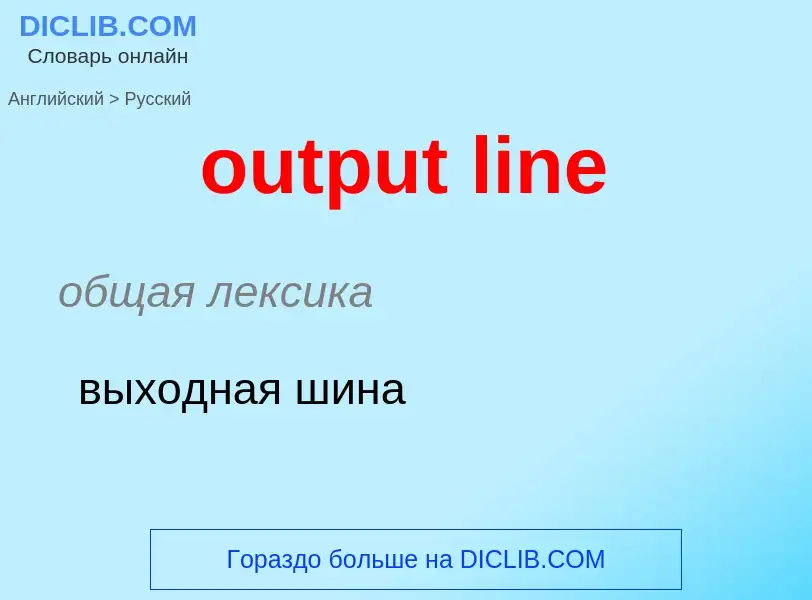Übersetzung und Analyse von Wörtern durch künstliche Intelligenz ChatGPT
Auf dieser Seite erhalten Sie eine detaillierte Analyse eines Wortes oder einer Phrase mithilfe der besten heute verfügbaren Technologie der künstlichen Intelligenz:
- wie das Wort verwendet wird
- Häufigkeit der Nutzung
- es wird häufiger in mündlicher oder schriftlicher Rede verwendet
- Wortübersetzungsoptionen
- Anwendungsbeispiele (mehrere Phrasen mit Übersetzung)
- Etymologie
output line - Übersetzung nach russisch
общая лексика
выходная шина
общая лексика
устройство вывода
электронное или электромеханическое устройство, соединённое с компьютером и используемое для отображения данных, выводимых из компьютера
Смотрите также
Definition
Wikipedia
IS–LM model, or Hicks–Hansen model, is a two-dimensional macroeconomic tool that shows the relationship between interest rates and assets market (also known as real output in goods and services market plus money market). The intersection of the "investment–saving" (IS) and "liquidity preference–money supply" (LM) curves models "general equilibrium" where supposed simultaneous equilibria occur in both the goods and the asset markets. Yet two equivalent interpretations are possible: first, the IS–LM model explains changes in national income when the price level is fixed in the short-run; second, the IS–LM model shows why an aggregate demand curve can shift. Hence, this tool is sometimes used not only to analyse economic fluctuations but also to suggest potential levels for appropriate stabilisation policies.
The model was developed by John Hicks in 1937 and was later extended by Alvin Hansen, as a mathematical representation of Keynesian macroeconomic theory. Between the 1940s and mid-1970s, it was the leading framework of macroeconomic analysis. While it has been largely absent from macroeconomic research ever since, it is still a backbone conceptual introductory tool in many macroeconomics textbooks. By itself, the IS–LM model is used to study the short run when prices are fixed or sticky and no inflation is taken into consideration. But in practice the main role of the model is as a path to explain the AD–AS model.




![[[Colossal Cave Adventure]] being played on a [[VT100]] terminal [[Colossal Cave Adventure]] being played on a [[VT100]] terminal](https://commons.wikimedia.org/wiki/Special:FilePath/Colossal Cave Adventure on VT100 terminal.jpg?width=200)
-4.jpg?width=200)
![A pair of [[computer speaker]]s and a [[subwoofer]] used in a desktop environment A pair of [[computer speaker]]s and a [[subwoofer]] used in a desktop environment](https://commons.wikimedia.org/wiki/Special:FilePath/Creative T4 Wireless 2.1 Speakers.jpg?width=200)
![An [[LCD monitor]] in use An [[LCD monitor]] in use](https://commons.wikimedia.org/wiki/Special:FilePath/Ecran plat wikipedia.jpg?width=200)


